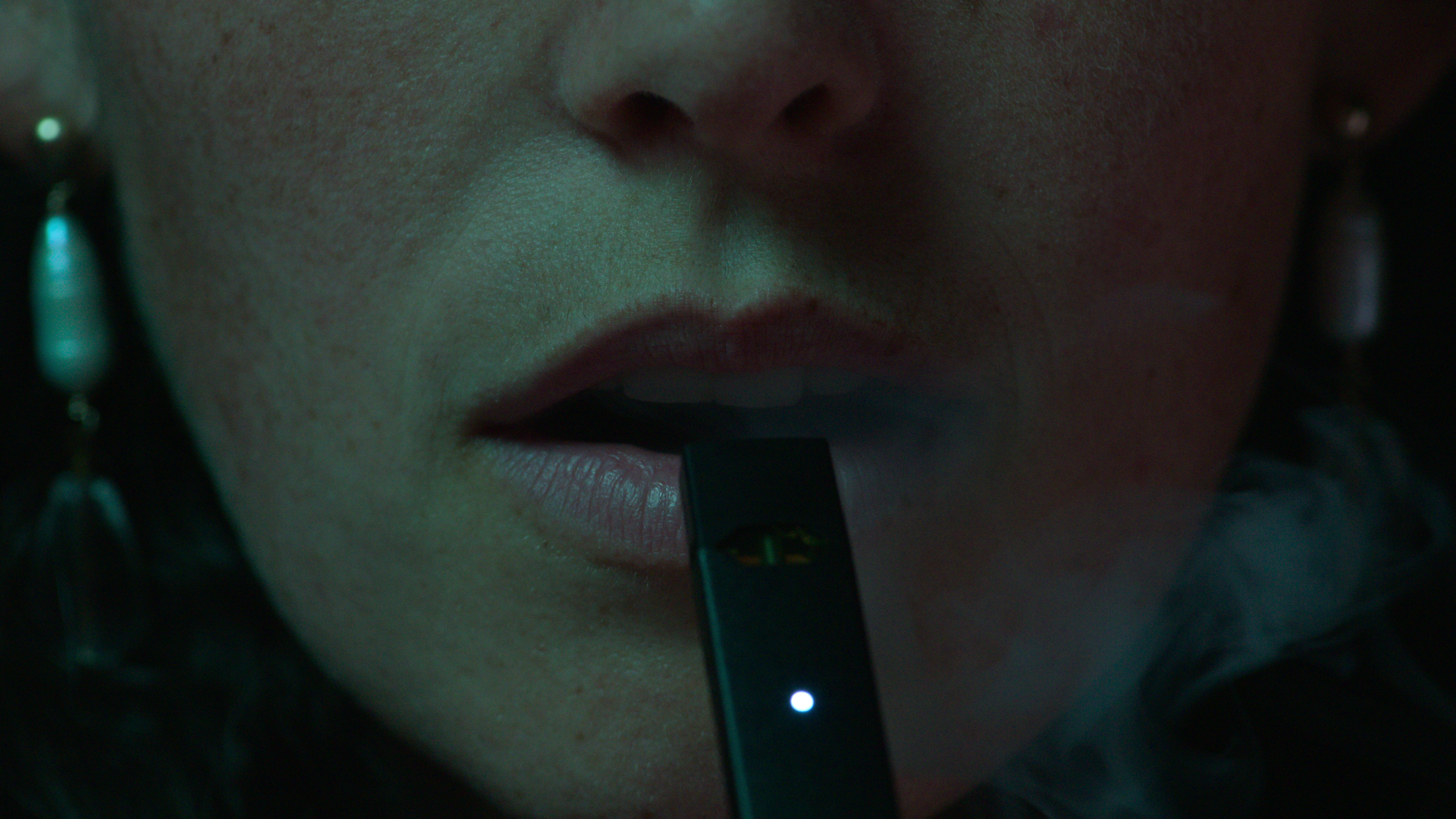Adaptations in Hollywood are nothing new, but they’ve been at the center of many of this year’s biggest pop-culture conversations. Any intellectual property seems up for reimagining, from books to toys to video games. There are many reasons behind their appeal to studios, among them that they tend to come with built-in audiences—but as I learned firsthand over the past few years, they can also give projects new depth and complexity.
On Oct. 11, an adaptation of my 2021 book, Big Vape: The Incendiary Rise of Juul, premiered as a Netflix series called Big Vape: The Rise and Fall of Juul. In addition to being interviewed on camera, I served as a consulting producer on the series. My role involved helping translate from page to screen the wild tale of Juul Labs, the vaping company that set out to create an e-cigarette good enough to make cigarettes obsolete—and instead became infamous for hooking countless teenagers on nicotine. Through that process, I watched my reporting take on new life and become enriched by even more perspectives on the complex, controversial story of Juul.
Ahead of the series’ release, I spoke with Big Vape’s director R.J. Cutler, the filmmaker behind documentaries including The September Issue and Billie Eilish: The World’s a Little Blurry, about adapting a work of nonfiction, the differences between documentary filmmaking and journalism, and capturing nuance on screen.
TIME: First of all, what about Juul interested you?
R.J. Cutler: What grabbed me, and to this day has not let go of me, is that this story is a perfect way of exploring the unintended consequences of Big Tech. A couple of design students at Stanford have the bright idea to create an e-cigarette that they believe not only won’t be bad for you, but also will help you quit smoking combustible cigarettes. And what do you know? They ignite the epidemic of teen vaping.
How do you approach adapting nonfiction material? Did it ever feel stifling to base the series on a book instead of starting from scratch?
Quite the opposite. It gave us an incredible foundation for the shape of the narrative and the structure of the narrative, but also highlighted where we would want to add things that weren’t in your book. There was a lot of freedom; this was going to be a cinematic telling of the story as opposed to a prose journalism telling of the story. And what a gift, to have somebody who had already been through the experience, banged your head against the wall, digested it all and suffered through the attendant stomachaches, and came up with a resonant, coherent, dramatic, compelling, character-driven narrative. And guess what? We’re free to use it all!
When we first started working together, though, my book wasn’t finished. Did that scare you? I mean, what if the book turned out terribly?
That didn’t occur to me.
That’s good, because I worried about it a lot!
With a lot of the work I do, you have to have faith that it’s all going to work out. When you get to the other side of the forest, the path to get through seems pretty clear. But we’re always, at the beginning, looking at a forest. If I found that daunting, where would I be? I love to cook, so I often equate the process to making a reduction. You’re reducing, reducing, reducing to get to the essence of the thing.

As you know, my big concern was maintaining the complexity of the story as it transitioned from book to series. It’s easy to see Juul as a villain, and they deserve much of the criticism they get. But, at the same time, Juul has helped some adult smokers. It’s messy.
One of the things I get asked a lot is what surprised me the most about Juul’s story. And to me, the biggest surprise was that the damn thing worked. In spite of all the mistakes the company made and all the things that led to the fall of Juul, they did invent this electronic cigarette that had the potential to do all the things they set out to do.
This was a story that had been told before, but, with the exception of your book, it had often been reduced beyond the complexity of a fine sauce. It was reduced to runny ketchup. I wanted to explore the gray area.
I was similarly surprised by that while writing my book. I had covered vaping for a couple years when I started, but when I fully immersed myself in the story, it became even more complex to me. It was interesting to see my thought process evolve as the book came together.
I like to say films resonate between the things that I witness, the things that I learn, the things that I see being experienced, and the experience I myself have. Even with the same exact footage, I would make a completely different film than another filmmaker. There’s an authorial presence. It’s part of the story that you’re telling.
I agree, though as journalists we’re trained to minimize that authorial presence. How do you see your role as a documentary filmmaker compared to that of a journalist?
Documentary filmmakers are working in cinematic art. And while we are every bit as beholden to the truth as a journalist is, the values of cinematic art are different from the values of objective reportage. They live differently. We’re working with light and color and sound and image and structure. We’re dealing with an art form that is larger than life but resembles life. It deals with human emotion in a way you can experience. You’re on a journey that finds an equilibrium in complexity.
This conversation has been condensed and edited for length and clarity.

